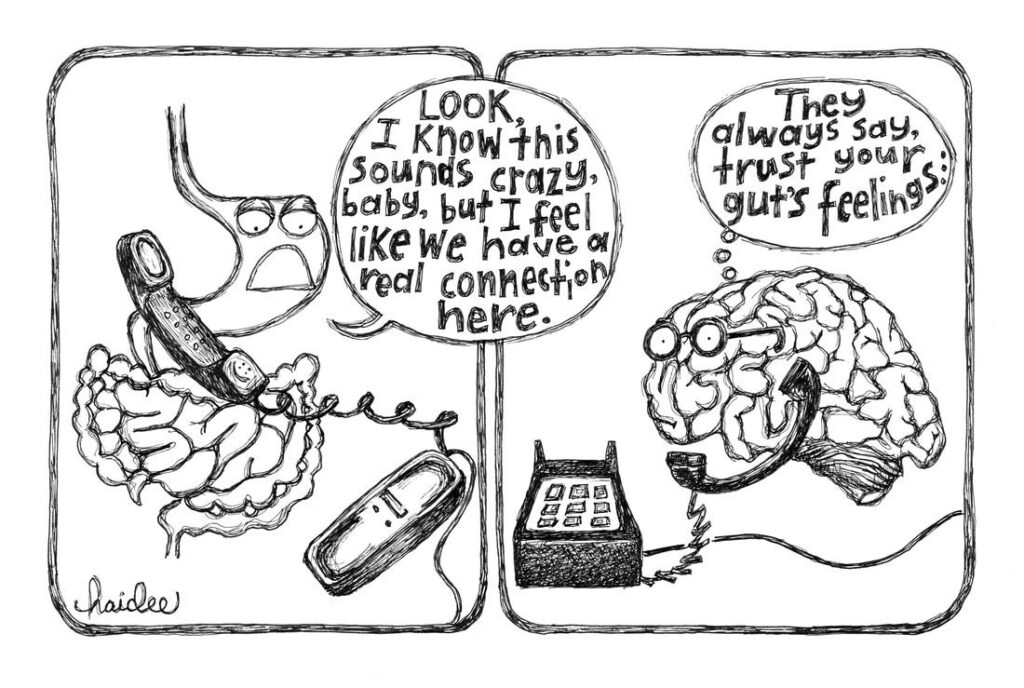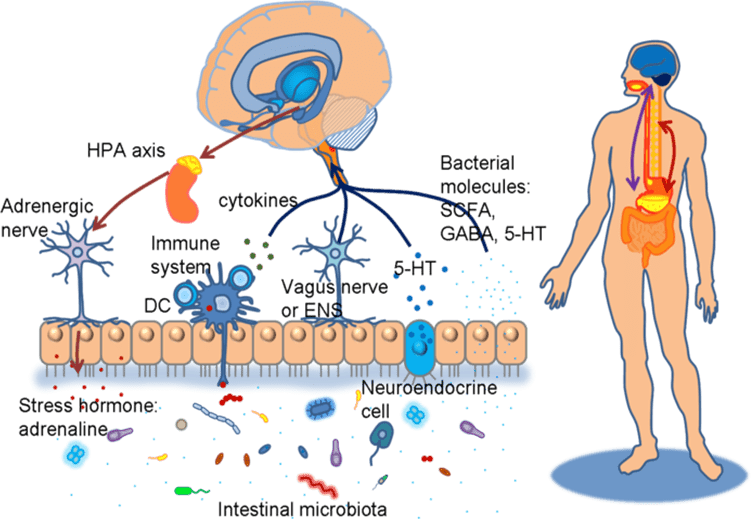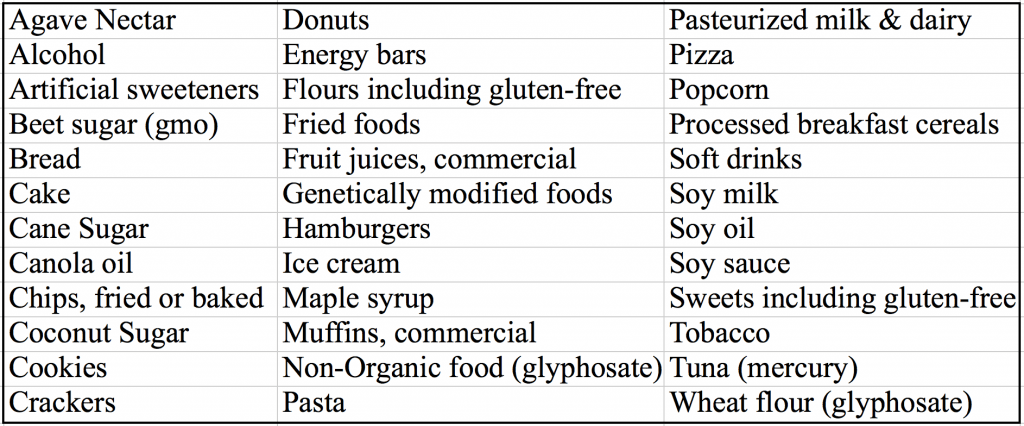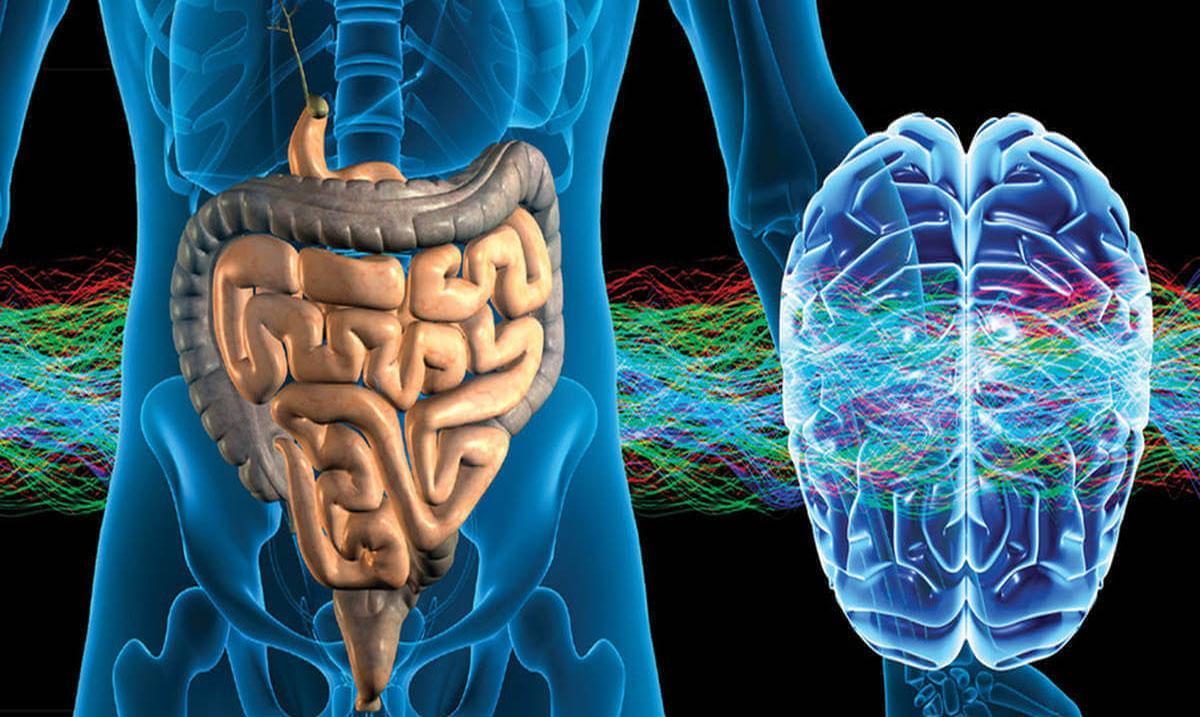
By Jane Barthelemy. What is your most valuable personal asset? Most people would agree that intelligence is right up at the top of the list. We spend time and effort building our appearance, and our physical assets. But how can we stimulate healthy brain function? What can we do to build intelligence?
Surprisingly, scientists are now saying you’ll find intelligence in the gut. Recent studies show that a high-functioning brain is dependent upon two essential factors: a balanced nervous system, and a healthy intestinal environment. Yep, the brain and the gut are intimately connected. And both these factors are determined by the foods we eat.
Certain foods cultivate a tranquil nervous system and balanced intestinal micro-biome. Other foods can stress our nerves or challenge gut bacteria. We’ve all experienced it – you eat a low-nutrient lunch, your mood suffers, you feel irritable and tired. Your mental awareness and productivity plummet. Thousands of nerve endings in the gut connect directly to the brain, and they require optimum nutrition to function. So if the key to smarts is a balanced relationship between the brain and gut, how can we nourish these two aspects and cultivate true intelligence?
OK, What’s Intelligence?
The first step is to define intelligence. Most of us would agree that there are many types of intelligence. A hundred years ago, people created tests to measure IQ, with varying results. In recent years, huge advances in intelligence studies are being made by schools, hospitals, psychologists, and neurological centers. Many tests exist, that measure different types of cognitive abilities. I see that there are basically four types of intelligence.
The Four Types of Intelligence – Which is Yours?
- Left Brain – How well do you focus attention, precisely recall facts, language, and numbers? How vital is your cognitive flexibility? What degree of skill and ingenuity do you bring to any challenge? How long is your attention span?
- Right Brain – How well do you integrate creativity, artistic expression, music, visual skills, and play? Do you have the capacity to vision, plan, and carry out a project from start to finish?
- Heart – What is your emotional intelligence? Are you generous or empathic with others? Are your eyes deep and bright? How well you adapt to your changing environment? How happy and balanced are you? Do you value yourself? What’s your level of self-esteem and motivation for self-expression? Are you self-reliant, i.e. can you reason independently without relying on outside forces?
- Body – What’s your neural response time to stimulation? How integrated are your body movements? Are they precise and graceful? Do you easily learn new physical coordination? Are you in good shape or easily fatigued? Do you have a keen inner sense of your body functions and physical wellness?
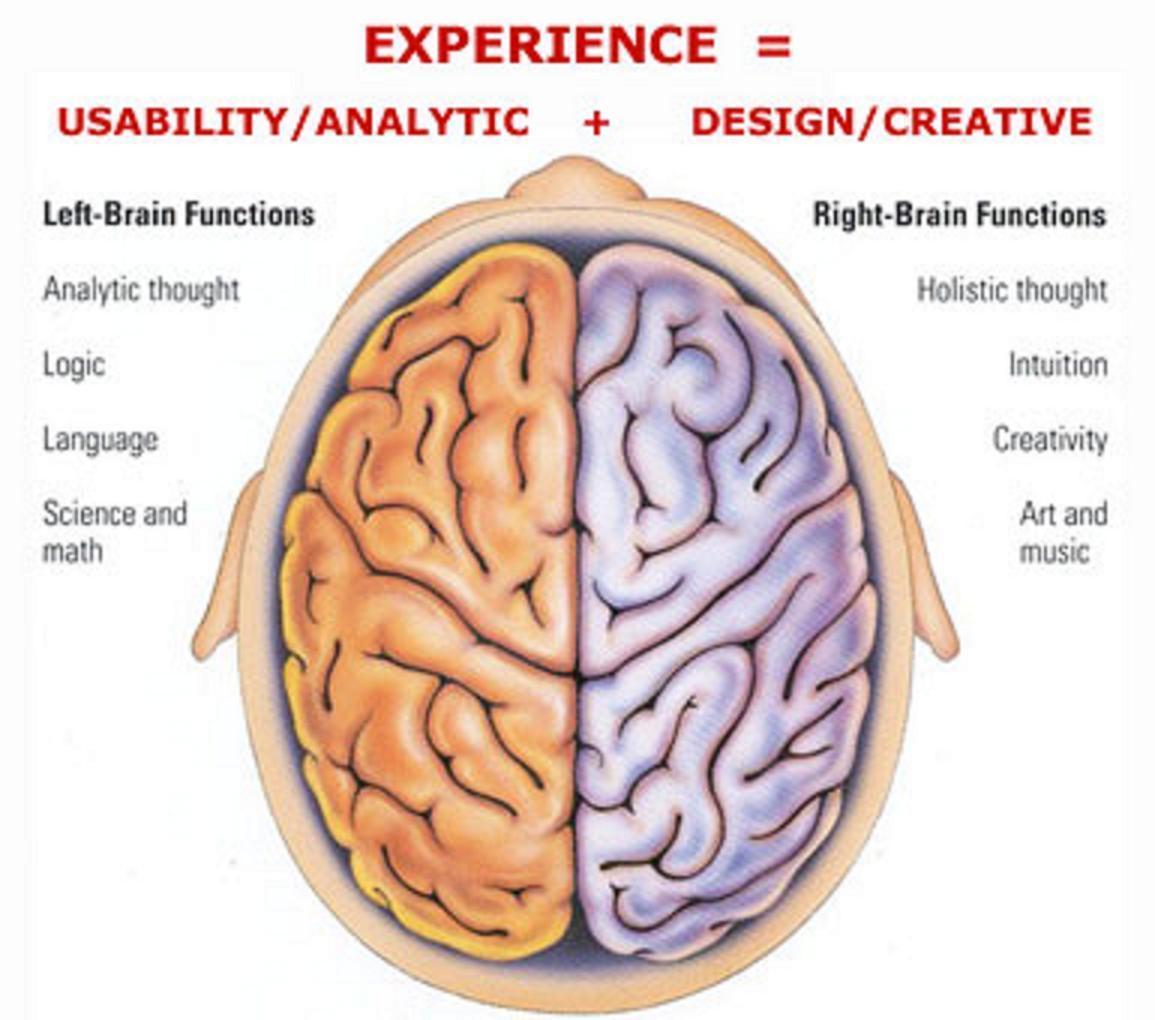
An artist’s image of left and right hemispheres of the brain. It shows detail and structure on the left, creativity, art, synthesizing and play on the right. Intelligence tests measure left brain skills, but rarely right brain qualities.
How Can We Measure Intelligence?
We have IQ tests, school aptitude tests, and achievement tests. Neurologists also have specific ways to measure brain function in patients. Many of these tests focus on left-brain abilities. Most are skewed toward a certain type of environment, experience, or language skills. Some people score low in school tests, and go on to achieve amazing success in life. Measuring intelligence is a risky attempt to value one person over another, and can have negative results. While left-brain skills may measure IQ and details, right brain creative intelligence is impossible to quantify. Heart Intelligence is futile to measure. And body intelligence is also challenging to quantify.
5. Embodied Intelligence – The Highest Intelligence Combines all Four Types
What’s your primary type of intelligence? Or do you have all four types of intelligence equally? True embodied Intelligence combines all four types. It is by far the highest level, although it’s almost impossible to measure.
Intelligence is High Integration between Nervous System and Body. Brain and Gut
We’ve heard that the way to someone’s heart is through the stomach. New scientific studies are revealing that the quickest way to the brain is also through the stomach. Yes, the root of brain function is a healthy gut.
What’s Going on Inside the Brain?
Inside your brain are trillions of cells connected to the rest of the body in a vast electromagnetic, biological communication matrix far more complex than any computer. Interaction happens through liquids, bone movements, connective tissue, chemical exchange, and nerves. The brain monitors your movements and body chemistry with every breath, receiving messages and sending adjustments via the nervous system, endocrine glands, cerebrospinal fluid, and the blood.
What’s Happening in your Gut?
At any given moment, your gut is inhabited by somewhere between 10 trillion and 100 trillion microorganisms. That means there are far more microbes in your intestines than there are cells in your body. The collective DNA of these microbes has about 150 times as many genes as your own DNA. Hence the type of bacteria and the integrity of their respective DNA are critical to a healthy intestinal flora. The majority of bacteria in your gut are friendly and needed for health. Each type of bacteria has a specific role to play in helping you digest your food into energy. And some of the bacteria actually produce nutrients that we cannot produce ourselves. Scientists that study the human micro-biome estimate that it contains over 1,000 species and 7,000 distinct strains of bacteria.
New research in the Enteric Nervous System in the gut (ENS) indicates an intimate relationship between the nerve connections in the intestines and the brain. Both the ENS and brain tissue are richly endowed with neuro-transmitters and neuro-modulators. Surprisingly, many substances are found in both the intestines and the brain.
Good-Gut / Bad-Gut
If the gut micro-biome balance is out of alignment, the good bacteria can’t do their job, bad bacteria may proliferate, and the digestive tract can become stagnant and toxic. We become prone to diseases like obesity, anxiety, depression and even cancer. We suffer from exhaustion and feel cranky and irritable. Many chronic diseases, and most neurological diseases, are associated with poor bacterial balance in the intestines.
Intimate connection between gut and brain
Decades ago, Nobel laureate Linus Pauling, PhD, observed that the brain was far more sensitive than any other organ to nutritional deficiencies or imbalances. Scientists are now revealing that there is a strong relationship between the gut and the brain. They are finding that microbes residing in the gut play an essential role, and are able to communicate with the central nervous system through nerves, blood, lymph, endocrine, and immune systems. Studies show that we can lower stress, enhance brain cognition, and improve mood by simply balancing types and concentrations of beneficial gut bacteria in the gut eco-system.
Your brain is never alone. Brain function is intimately linked to other systems in the body. What’s becoming more and more clear is that the microbes in the gut are essential for the brain and mental health. Dr. Ted Dinan, MD, PhD. Professor of Psychiatry, became an expert in this field almost by accident. At the University of Cork, in the UK, some microbiologists were experimenting with bacteria they described as “probiotic” as it conferred some kind of health benefit. As a clinical psychiatrist, Dinan conducted an experiment where he fed the probiotics to rats he was studying for mental health. To his surprise, rats on probiotics demonstrated less anxiety and depression. Dinan coined the term “psychobiotics” for microbes that can benefit the human brain and behavior.
“Neuroscientists are probing the idea that the intestinal microbiome may influence brain development and behavior in children and adults.”
A Study Shows Probiotics can heal ADHD and Autism
In a recent controlled Finnish study of 75 babies with gut problems, the researchers were able to demonstrate that just receiving one specific species of a probiotic virtually eliminated the development of either ADHD or autistic spectrum.
The Finnish study concluded: “Probiotic supplementation early in life may reduce the risk of neuropsychiatric disorder development later in childhood…”
Research results: Eating yogurt two times a day improved mood.
Perhaps the most widely known human study was done by Mayer, a UCLA researcher. He studied 25 subjects, all healthy women. For four weeks, half of them ate a cup of commercial yogurt twice a day, while the rest did not. Yogurt is a probiotic as it contains live bacteria. In this case the four species were bifidobacterium, streptococcus, lactococcus, and lactobacillus. Before and after the study, subjects were given brain scans to gauge response to a series of images of emotional facial expressions—happiness, sadness, anger, and so on.
 Women who ate yogurt twice a day responded to tests more calmly than the control group that did not. “This was not what we expected.” said Mayer, “that eating yogurt twice a day for a few weeks would do something to your brain.”
Women who ate yogurt twice a day responded to tests more calmly than the control group that did not. “This was not what we expected.” said Mayer, “that eating yogurt twice a day for a few weeks would do something to your brain.”
To Mayer’s surprise, the results published in 2013 in the journal Gastroenterology, showed significant differences between the two groups; the yogurt eaters reacted more calmly to the images than the control group. “The contrast was clear,” says Mayer. He thinks the bacteria in the yogurt changed the makeup of the subjects’ gut microbes, and that this led to the production of compounds that modified brain chemistry.
What is the gut–brain axis?
We always knew the gut and brain were connected. Now we have a term for it. The gut and the brain are part of the enteric nervous system (ENS). They form the “gut-brain axis,” which is a fine meshwork of nerve fibers that run through the gastrointestinal tract, pancreas and gall bladder. The ENS communicates to the brain in a bi-directional two-way exchange regarding hundreds of mechanical and chemical reactions in the body, including the secretion of more than 40 neurotransmitters. Surprisingly, 95% of the body’s serotonin, or mood regulating chemical, can be found in the gut. This is why the gut is often referred to as the “second brain” or “gut brain.” In addition, the gut houses about 70% of the body’s immune cells. That makes it doubly important to keep your gut healthy.
When the gut is leaky (permeable), there’s trouble
The intestinal tract is lined with tiny villi, or hairy protrusions responsible for transferring molecular nutrients directly into the bloodstream. When the tiny openings in the small intestines become weak, clogged with debris and excessive junk food, or if they become inflamed, they can “leak” toxins and particles into the bloodstream that do not belong. This can cause allergies, fatigue, bloating, diarrhea, hyperactivity, brain fog, auto-immune diseases, joint inflammation, intestinal permeability – or “leaky gut”.
A Happy Gut is the Root of a Happy Brain
The Gut-Brain Axis includes the endocrine glands located in the brain and the adrenal glands or the HPA Axis (hypothalamic-pituitary-adrenal axis). The gut flora plays a central role as part of the “microbiome-gut-brain axis”, which links brain and body functions.
6 Tips for Maximizing Intelligence:
1. Chew SLOWLY 50 times. We’ve all heard of “you are what you eat;” but really, you are what you absorb. Try to maximize digestion by being relaxed while eating. Take small bites and enjoy chewing your food completely. Experts say you should chew each bite 50 times. Chewing gives digestion a running start. After you swallow, your body can’t chew any more – Once it hits the stomach, enzymes have to do the rest of the work to extract the nutrients.

The #1 secret to good digestion: Savor your food.
Enjoy every bite as you chew thoroughly.
2. Eat whole fiber foods that are not finely ground, like gently cooked veggies, broccoli, soaked or sprouted whole grains, chia seeds, artichokes, legumes, lentils, black beans, okra, Chick peas, nuts and seeds. Avoid flour and finely ground fiber, which adds to the congestion in the intestines.
3. Identify and eliminate allergens or inflammatory triggers The most common causes of gut inflammation and imbalance are sugar, dairy, flours, processed foods, industrial food toxins, and GMO foods. Even medications can contribute to inflammation. Antibiotics, antacids and steroids can create gut permeability. The most common allergenic foods include grains, corn, wheat, soy, dairy, eggs, nuts and fish. If this seems overwhelming, consider food allergy/sensitivity testing.
4. Enjoy fermented foods, water with unfiltered apple cider vinegar, or a quality probiotic supplement. Incorporate a serving of raw sauerkraut or kimchi in every meal. Children especially need fermented foods at every meal, to counteract the effects of modern food toxins.
5. Stay active and minimize stress. Lack of movement, or a sedentary lifestyle lowers all your body functions, including your brain. You need regular aerobic movement for healthy circulation of blood and lymph. Regular movement helps to flush stress out of the body. Stress or trauma are MAJOR contributors to inflammation and gut health. Whenever you’re feeling stressed, take a walk and do some slow breathing. You may need to carefully manage chronic stress with techniques, or to re-arrange your daily priorities to change a pattern of stress.
6. Avoid these substances that damage gut bacteria
The gut micro-biome is like a healthy eco-system. Trillions of bacteria and enzymes are all working together for your health. It’s essential to cultivate a balanced gut. Our modern diet is inundated with processed foods, toxins, and genetically modified organisms. These are the worst enemies of your intestinal micro-biome. Their effect is subtle and powerful. Most people wouldn’t blame poor grades or a bad memory on sugar, GMO foods or pesticides. However studies clearly show the rising incidence of ADHD, autism, and neurological diseases are all linked to poor bacterial balance in the intestines.
- Sugars, Maple syrup, Agave, Coconut sugar, Artificial sweeteners
- Pesticides, herbicides like Glyphosate, fungicides in conventional foods. Eat organic.
- Aluminum in cookware, baking equipment, cans, foil, and deodorants
- Mercury in dental amalgams, vaccines, and fish such as tuna, swordfish.
- Vaccines, which contain heavy metals aluminum, mercury
- Toxins such as solvents, glues, paint, Fluoride in drinking water
- GMO foods, which alter bacteria DNA
- Antibiotics, Pharmaceuticals, Statin drugs
- Alcohol consumption, Psychedelic drugs
What are the Best Foods to Optimize Intelligence?
To coordinate the nervous system and the gut, we need foods that build brain power and balance the gut micro biome. Given an ample supply of these neuro-nutrients, intelligence can grow, demonstrated by good cognition, healthy moods, and strong body. Here are some of the top intelligence foods in alphabetical order:
Best Intelligence Foods for Brain and Gut:
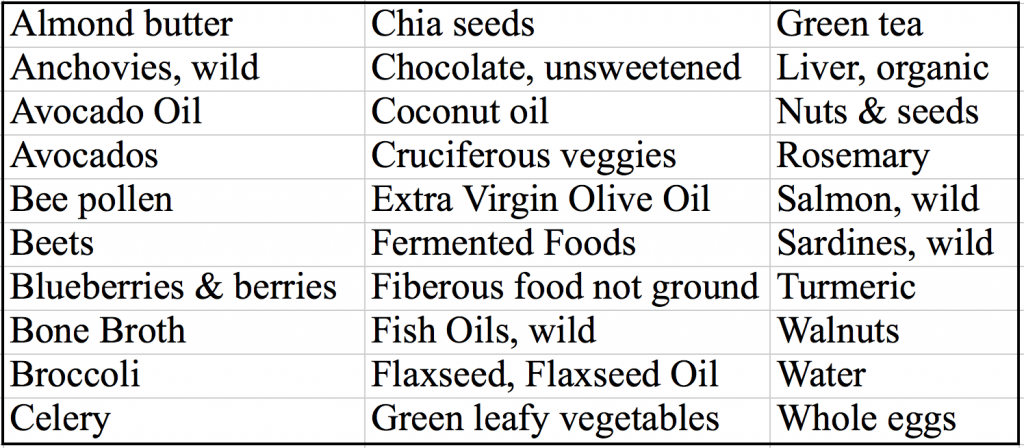
The Worst Foods for Brain Function and Mood
Nearly 2,000 years ago, Hippocrates, Greek Physician said: “All disease begins in the gut.” Fill your gut with junk foods, and the brain soon sputters and misfires, affecting your mood. When you eat sweets and your blood sugar crashes, your mood usually crashes too, leaving you tired, impatient and irritable. Here are some of the WORST foods for intelligence in alphabetical order:
Worst Intelligence Foods for Brain and Gut:
Optimizing our smarts at any age means integrating wellness in the nervous system, with a healthy intestinal micro biome through conscious foods. Only when the nervous system and gut environment are balanced can we enjoy optimum brain function.



